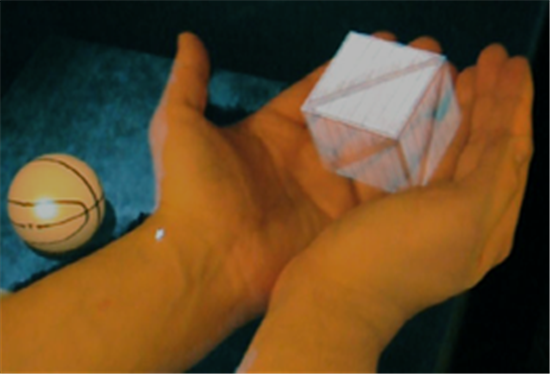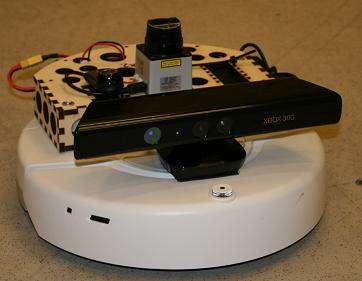Abstract
This paper is an exploration of the internet and published article sources that give a glimpse of Microsoft Kinect and its utility in the consumer market. It shows the interaction of the human/virtual environment without necessarily using the actual controllers or buttons but by using natural speech or gestures. The paper will also scrutinize the field’s advancement, since Kinect was released finding its application in diverse fields having in mind that it was anticipated to be used in games. Following the introduction of Kinect, the prospects of Natural User Interface (NUI) appear to be extended. It has permitted an almost prompt human-machine communication.
Introduction: Microsoft Kinect Application
Intuitively, technology should understand us and work for us but not the other way round. Kinect for windows has helped change the way how people and computer relate by providing developers and businesses with the necessary tools to produce new solutions (Borenstein, 2012). This has enabled people to communicate naturally through speaking or gesturing. Companies worldwide are using Kinect sensor and the Software Development Kit (SDK) to improve and set up pioneering solutions for healthcare, education and retail markets.
Method: Microsoft Kinect Hardware
Depth sensing cameras have for a long time been used in research owing to the high costs associated with such specialized gadgets. Following the introduction of the Kinect, imaging real time depth has been made possible for the everyday developer at reduced rates. Formally referred to as “Project Natal”, Kinect is a gadget that was intended for the Xbox 360 video games to control the video game without using a controller. It has four vital components namely a transmitter, an accelerometer, a specialized chip and an infrared camera that collectively analyzes received information. The depth sensor is what makes all the difference by detecting the precise player’s position in a room. This has been made latent, since the reflected rays gathered from the sensor are converted into data that defines the distance between the device and the object.
The obtained infrared image is then meshed with an RGB image, and it is processed in real time. The software in this case determines the various joint positions of the player and then pinpoints their position constructing the skeleton outline. This analysis software also determines the system’s latency, and if it processes too slowly, the image reproduction on the screen is delayed (Zhang, 2012). To provide voice recognition capabilities and to improve the player position detection, Kinect uses multi array microphones to detect sound. The microphones are capable of capturing sound from a particular way identifying its source and the audio wave course. A 2G range configured accelerometer is also mounted on the Kinect, which helps determine the current sensor position allowing it to measure the object as close as 40 cm with precision and accuracy. This enhances a smoothing degradation of up to 3 m (Seguin & Buisson, n.d).
The Kinect SDK can be utilized on a computer that has a maximum of four sensors and on different virtual machines supporting Windows. This kind of flexibility enables developers and businesses to implement what is right with regard to their requirements at their own discretion. SDK newest version includes a sensor, which connects to the web browsers, that has been possible through HTML samples. The developers have the capacity to use such programs as OpenCV to create cutting-edge Kinect applications utilizing available developer’s typical libraries.
Results
Human Health and Kinect
Kinect for Windows has expanded awareness of the human features. This includes face tracking and body movemennt, and acknowledgement of human body actions. Another add-on is voice recognition that enhances the comprehension of human. Together with Kinect fusion they help capture the scene’s depth and color that help in reconstruction of a three-dimensional model that is printable.
Healthcare providers have been fast in recognizing Kinect’s cost effectiveness in improving care for patients at the same time enhancing smooth clinical workflow (Cook, Couch, Couch, Kim, and Boonn, 2013). A practical application of the technology is in Reflexion Rehabilitation Measurement Tool (RMT) developed by San Diego’s Naval Medical Center. This physical therapy gadget allows doctors to modify patients’ schedules and to remotely observe patients. The program uses a personal computer operating Windows 7 and Microsoft Kinect motion camera. Such capabilities of the gadget have helped the physical therapist improve patients’ adherence to any given prescription. RMT is sold with installed educational directions from a specific therapist. The on-screen guide or avatar directs them on how to conduct the exercises correcting them when they do something wrong. The patient’s therapist has the capacity to review the session’s records before the patient visits them hence assessing their compliance.
With the ability to track three-dimensional motion, the Kinect serves as a vital analysis tool for numerous medical conditions. The patients’ experiences, on the other hand, are immersed in the virtual healthcare that is convenient and simplified (Borenstein, 2012). Patients can now attend any clinic and be connected instantly with a doctor from any part of the globe (Boulos, Blanchard, Walker, Montero, Tripathy, and Gutierrez-Osuna, 2011). The doctors have simultaneously experienced new precision and productivity levels allowing them to meet with more patients every day with specialists attending to specific patients despite the distances. Therefore, doctors can use Microsoft Kinect to operate varying equipment remotely that aids in running analysis, collecting data and relaying instructions (Boulos et al., 2011).
Kinect and the Gaming World
With Kinect sensor for gaming hitting sales of 10 million units in 2011, Microsoft earned a Guinness World Record Award for this peripheral. The device became the best-selling electronic device for the consumer shifting 133 333 units every day since its launch (4th November 2010 and 3rd January 2013). This figure outstripped that of the Nintendo Wii that took two years to hit such a sale. Microsoft Kinect has changed the way people play games and watch movies. With Kinect, remotes and controllers have become a thing of the past. The experience has allowed complete body gaming responding to how one moves (Ungerleider, 2013). Once a person waves a hand, the sensor is activated hence recognizing a person’s image allowing their avatar to be opened. Kinect also has an advanced voice recognition technology that responds to peoples’ voices that helps them in revealing preloaded voice commands (Benedetti, 2010). Peoples’ voices can be used to control movies with no remote required. The technology has been versatile with fun and secure involvements, since it has installed parental control parameters for decent family movies.
Microsoft Kinect and the Future
Numerous technologies have emerged following Kinect launch where a prototype called Holodesk, which uses Kinect camera technology, has been coined. This innovation, once it has been tested, will offer a possibility to manipulate three-dimensional objects after projecting them from the device by mirrors with semi-reflective surfaces. To track and pinpointing the locations of the hands, the device will work in collaboration with a Kineck camera.

Other applications could utilize Kinects’s ability to respond to human gestures and mapping objects in three-dimensional that can be incorporated with existing gadgets such as aerial drones in responding to disasters such as the KinectBot.

To remain at the top of the gaming world, Microsoft has to incorporate and improve its existing gaming consoles so that they can have a competitive edge. For example, there are possibilities of Microsoft Kinect 2.0 being released soon that will have the capabilities of tracking game players with an average height of one meter. The device might also have a feature that will enable players to play while standing or sitting detecting their hands status. The device will also detect rotated or extra joints enabling more than six people to play at the same time. Furthermore, to enhace continuous communication, this device will have improved displays requiring larger playing spaces. Its RGB streams will have enhanced resolution and quality with the depth stream being able to detect and resolve tiny objects in the game. An active infrared camera will come handy in permiting independent procesings of the lighting and recognition of human features. The device is expected to have a 33 ms latency improvement making the device a must-have in the entertainment field. The most outstanding component will be the 3.0 USB cable that will enhace faster transmission of data.
Conclusion
Kinect has opened many augmented and virtual doors to everyone, but this does not make it a perfect device. It still needs better sensors, microphones and cameras and associated components such as robotics and screens to improve the Kinect’s capacity. Through its SDK, the Kinect has enabled lone developers to produce numerous functions for this application (Seguin& Buisson, n.d). Eventually, this has opened the virtual reality doors that had been reserved for research and big companies. The interactive and instinctive communication that human would want can only be achieved through use of Kinect.
References
Benedetti, W. (2010). After passing on Kinect, Sony makes a move on hardcore gamers. Web.
Borenstein, G. ( 2012). Making things see: 3D vision with Kinect, Processing, Arduino, and MakerBot. Sebastopol, CA.: O’Reilly Media, Inc.
Boulos, M. N., Blanchard, B. J., Walker, C., Montero, J., Tripathy, A., and Gutierrez-Osuna, R. (2011). Web GIS in practice X: A Microsoft Kinect natural user interface for Google Earth Navigation. International Journal of Health Geographics, 10 (1).
Cook, T. S., Couch, G., Couch, T. J., Kim, W., and Boonn, W. W. (2013). Using the Microsoft Kinect for patient size estimation and radiation dose normalization: Proof of concept and initial validation. Journal of Digital Imaging, 26(4), 657-662.
Seguin, C., & Buisson, S. (n.d). After Kinect. Web.
Ungerleider, N. (2013). Microsofts Kinect is now a sign language translator. Web.
Zhang, Z. (2012). Microsoft Kinect sensor and its effect. IEEE MultiMedia, 19 (2), 4-10.